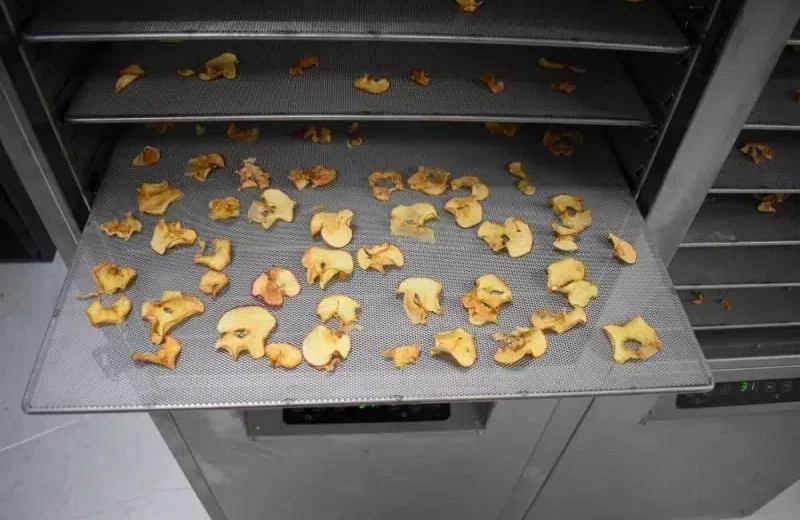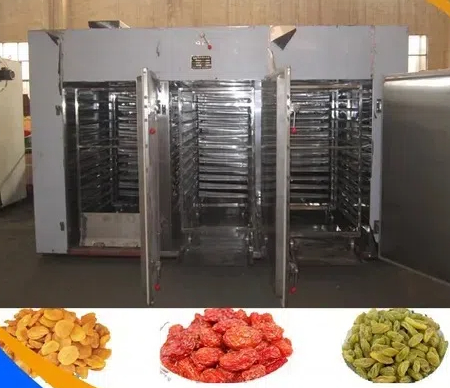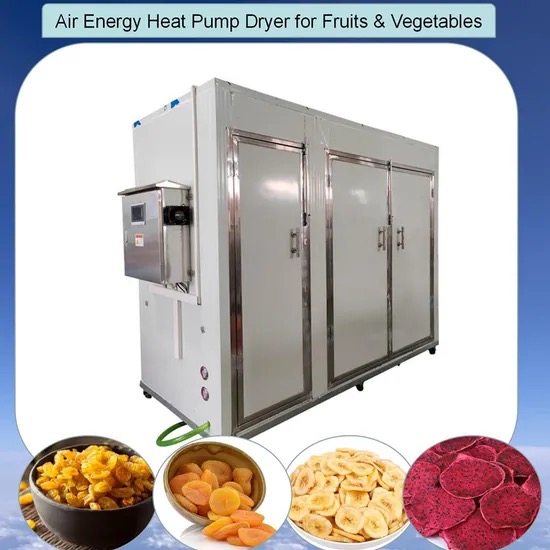
Content Menu
● The Science of Dehydration
● Benefits of Cabinet Type Dehydrators
● Preparing Your Food for Dehydration
● Optimizing the Dehydration Process
● Tips for Perfect Drying
● Maximizing Efficiency and Longevity
● Common Pitfalls to Avoid
● Exploring Creative Applications
● Safety Considerations
● Troubleshooting Common Issues
● The Environmental Impact of Dehydration
● A Global Perspective
● Future Trends in Dehydration Technology
● The Joy of Homemade Dried Snacks
● Conclusion
● FAQ
>> 1. What is a cabinet type dehydrator?
>> 2. What are the benefits of using a cabinet type dehydrator?
>> 3. What types of food can be dehydrated in a cabinet type dehydrator?
>> 4. How do I ensure energy efficiency when using a cabinet type dehydrator?
>> 5. How do I maintain a cabinet type dehydrator?
● Citations:
A cabinet type dehydrator is a self-contained unit designed for removing moisture from food products, which extends their shelf life and preserves their natural qualities. These dehydrators offer a controlled environment to ensure consistent drying, leading to high product quality and minimal waste. They integrate a heat pump dryer with a precisely controlled chamber to optimize performance and maximize energy efficiency. This introduction sets the stage for exploring the world of dried snacks, emphasizing the role of a cabinet type dehydrator in achieving superior results.

The Science of Dehydration
Dehydration is a method of food preservation that removes water from food, inhibiting the growth of microorganisms and slowing down the activity of enzymes that cause spoilage. By reducing the moisture content, the food becomes less susceptible to bacterial and fungal growth, extending its shelf life significantly. This process not only preserves the food but also concentrates its flavors, resulting in intense and delicious dried snacks.
Benefits of Cabinet Type Dehydrators
- High Efficiency: Cabinet dehydrators ensure consistent dehydration while minimizing energy waste. Modern models often feature insulated walls and doors to minimize heat loss. The efficiency of a cabinet dehydrator is also due to its ability to maintain a steady temperature and airflow, which prevents hot spots and ensures that all food items are dried evenly.
- Versatility: They can dry a wide range of foods, including fruits, vegetables, meats, herbs, spices, noodles, and pasta. Adjustable settings allow for optimized dehydration of different materials. For example, fruits with high sugar content may require lower temperatures to prevent caramelization, while meats need higher temperatures to ensure they are safe to eat.
- Precise Control: These dehydrators offer precise temperature and airflow control, which ensures even dehydration and preserves the integrity of textures and flavors. Accurate temperature settings are crucial for preventing scorching or under-drying of food products. Some advanced dehydrators have humidity control settings that can be adjusted to optimize the drying process. The ability to fine-tune these settings allows for experimentation and customization, enabling users to create a wide variety of dried snacks with unique textures and flavors.
- Large Capacity: Cabinet dehydrators are suitable for processing significant quantities of food, making them ideal for commercial operations. They can handle batches ranging from 100kg to 1000kg of products. This high capacity makes cabinet dehydrators an excellent choice for small businesses or families who want to preserve large amounts of seasonal produce.
- Extended Shelf Life: By effectively removing moisture, cabinet dehydrators significantly increase the shelf life of food products. Proper dehydration can extend the shelf life of food by months or even years, reducing spoilage and waste. This is particularly beneficial for individuals who want to store food for long periods without refrigeration.
- Nutrient Preservation: Cabinet dehydrators excel at preserving the natural flavors, colors, and nutrients in food. The precisely controlled drying process minimizes nutrient degradation, resulting in healthier and more flavorful products. Unlike other preservation methods, such as canning or freezing, dehydration does not require the addition of preservatives or additives.
- Hygienic Environment: The enclosed design minimizes contamination from dust, insects, and other environmental factors, providing a hygienic environment for food processing. This is especially important for commercial operations that must adhere to strict food safety standards.
Preparing Your Food for Dehydration
The key to successful dehydration lies in proper preparation. Here are some essential steps to follow:
1. Selection of Produce: Always start with fresh, ripe produce. Avoid using fruits or vegetables that are bruised, damaged, or overripe.
2. Washing and Cleaning: Thoroughly wash all produce to remove dirt, debris, and any residual pesticides.
3. Slicing and Cutting: Slice the food into uniform pieces to ensure even drying. The thickness of the slices will affect the drying time, so aim for consistent slices that are neither too thick nor too thin. A mandoline slicer can be helpful for achieving uniform slices.
4. Blanching (for certain vegetables): Blanching is a process of briefly steaming or boiling vegetables to stop enzyme activity that can affect the flavor, color, and texture of the dried product. Vegetables like broccoli, carrots, and green beans benefit from blanching before dehydration.
5. Pre-treatment (for fruits): Some fruits, such as apples and bananas, can darken during dehydration due to oxidation. To prevent this, pretreat them with an acidic solution like lemon juice or ascorbic acid.

Optimizing the Dehydration Process
Refer to the dehydrator's manual for recommended temperatures and drying times. Generally, fruits require lower temperatures (around 135°F or 57°C) and longer drying times, while vegetables need slightly higher temperatures (around 145°F or 63°C). Adjustments should be based on the thickness and moisture content of the produce, and careful monitoring and experimentation are crucial. The drying time will also depend on the humidity in your environment, so it's important to keep an eye on the food and make adjustments as needed.
Tips for Perfect Drying
- Arrangement on Trays: Arrange the food in a single layer on the dehydrator trays, ensuring that there is enough space between pieces for proper airflow.
- Rotation of Trays: Rotate the trays periodically during the drying process to ensure even drying. The trays at the bottom of the dehydrator may dry faster than those at the top, so rotating them will help to compensate for this.
- Monitoring Moisture Levels: Check the food periodically to assess its dryness. The ideal level of dryness will vary depending on the type of food and your personal preference. Fruits should be pliable and slightly sticky, while vegetables should be brittle and crisp.
- Proper Storage: Once the food is properly dried, store it in airtight containers in a cool, dark, and dry place. Proper storage is essential for preventing the food from reabsorbing moisture and spoiling.
Maximizing Efficiency and Longevity
To improve energy efficiency, consider batch processing, operating with full loads, using strategic timing during off-peak hours, adjusting temperature settings, and ensuring proper maintenance. Additionally, placing the dehydrator in a well-insulated area can help reduce energy consumption. Furthermore, be sure that all seals are properly closed so heat doesn't escape. You should clean your cabinet dehydrator after each use to prevent buildup and maintain hygiene. Regularly inspect the dehydrator for any signs of wear and tear, and schedule professional servicing at regular intervals to ensure optimal performance. This includes checking the heating element, fan motor, and control panel. A well-maintained machine operates more efficiently and reliably, saving both time and money.
Common Pitfalls to Avoid
Common mistakes include overcrowding the trays, not ensuring even slicing, failing to blanch certain produce, and not monitoring the drying process. Proper preparation and consistent monitoring are key to successful dehydration. Also, avoid using produce that is not fresh or that has blemishes. These errors can lead to uneven drying, spoilage, and unsatisfactory results.
Exploring Creative Applications
Beyond basic fruits and vegetables, a cabinet dehydrator can be used for more creative culinary projects. Consider making fruit leathers, jerky, granola, or even dehydrated pet treats. Experiment with different herbs and spices to create unique flavor combinations.
Safety Considerations
When using a cabinet dehydrator, always follow the manufacturer's safety guidelines. Use heat-resistant gloves when handling hot trays and food. Keep the dehydrator away from flammable materials and ensure it is placed on a stable surface.
Troubleshooting Common Issues
If your food is not drying properly, check the temperature settings, airflow, and tray arrangement. Ensure the dehydrator is clean and free from obstructions. If the problem persists, consult the manufacturer's troubleshooting guide or contact customer support.
The Environmental Impact of Dehydration
Dehydration is an environmentally friendly method of food preservation. It reduces food waste, lowers the need for refrigeration, and decreases reliance on processed foods with additives and preservatives. By dehydrating your own snacks, you can contribute to a more sustainable lifestyle.
A Global Perspective
Dehydration is a method of food preservation used worldwide. Different cultures have their own unique traditions and recipes for dried snacks. From sun-dried tomatoes in Italy to biltong in South Africa, dehydration has played a vital role in preserving and enjoying food for centuries.
Future Trends in Dehydration Technology
The field of dehydration technology is constantly evolving. Researchers are exploring new methods to improve energy efficiency, enhance nutrient preservation, and reduce drying times. Innovations such as infrared dehydration and microwave-assisted drying are showing promise for the future.
The Joy of Homemade Dried Snacks
Making your own dried snacks with a cabinet type dehydrator can be a rewarding and enjoyable experience. It allows you to control the ingredients, flavors, and quality of your food. Whether you are a health-conscious individual, a culinary enthusiast, or simply looking for a sustainable way to preserve food, a cabinet dehydrator can be a valuable addition to your kitchen.
Conclusion
A cabinet type dehydrator is a valuable tool for anyone looking to preserve food, create healthy snacks, and reduce waste. Its efficiency, versatility, and precise control make it a superior choice for both home and commercial use. By following the tips and guidelines outlined in this article, you can harness the power of dehydration to create a wide variety of delicious and nutritious dried snacks. Embracing this age-old preservation technique in the modern kitchen allows for sustainable practices and culinary creativity to flourish.

FAQ
1. What is a cabinet type dehydrator?
A cabinet type dehydrator is a self-contained unit designed to remove moisture from food products, extending their shelf life and preserving their natural qualities. Unlike simpler dehydrators, cabinet models provide a controlled environment that ensures uniform drying, resulting in superior product quality and minimal waste.
2. What are the benefits of using a cabinet type dehydrator?
Cabinet dehydrators offer several benefits, including precise control over temperature and airflow, large capacity for commercial operations, versatility for various food types, energy efficiency, extended shelf life, nutrient preservation, waste reduction, and a hygienic processing environment.
3. What types of food can be dehydrated in a cabinet type dehydrator?
Cabinet dehydrators are versatile and can be used for a wide range of food products, including fruits, vegetables, meats, herbs, flowers, noodles, and pasta.
4. How do I ensure energy efficiency when using a cabinet type dehydrator?
To improve energy efficiency, consider batch processing, operating with full loads, using strategic timing during off-peak hours, adjusting temperature settings, and ensuring proper maintenance. Additionally, placing the dehydrator in a well-insulated area can help reduce energy consumption.
5. How do I maintain a cabinet type dehydrator?
You should clean your cabinet dehydrator after each use to prevent buildup and maintain hygiene. Regularly inspect the dehydrator for any signs of wear and tear, and schedule professional servicing at regular intervals to ensure optimal performance. This includes checking the heating element, fan motor, and control panel.
Citations:
[1] https://www.dryeratech.com/how-to-dehydrate-fruits-and-vegetables-with-a-cabinet-type-dehydrator.html
[2] https://patents.google.com/patent/CN110207480A/zh
[3] https://www.dryeratech.com/best-practices-for-using-your-cabinet-type-dehydrator-effectively.html
[4] https://patents.google.com/patent/CN201919616U/zh
[5] https://drybox.in/cabinet-type-dehydrator/
[6] https://patents.google.com/patent/CN1110593C/zh
[7] https://aradmachineryco.com/catproduct/Cabinet-dryer
[8] https://www.jeuxloue.com/featured/all-in-all-its-just-another-slick-in-the-harbour/











